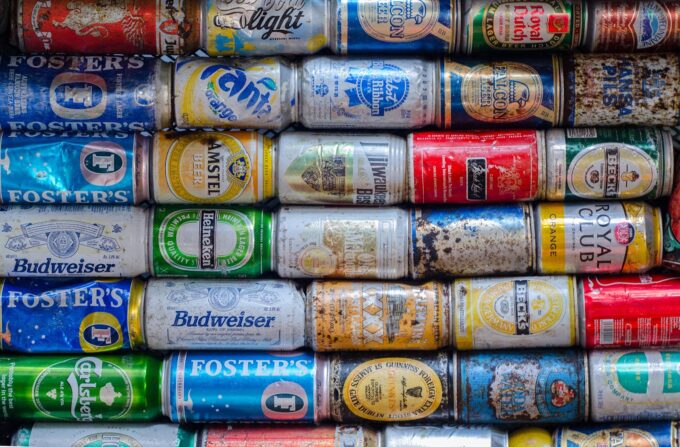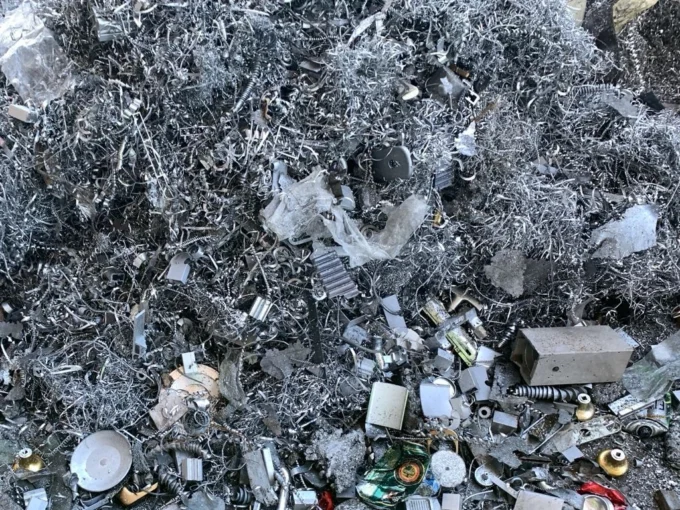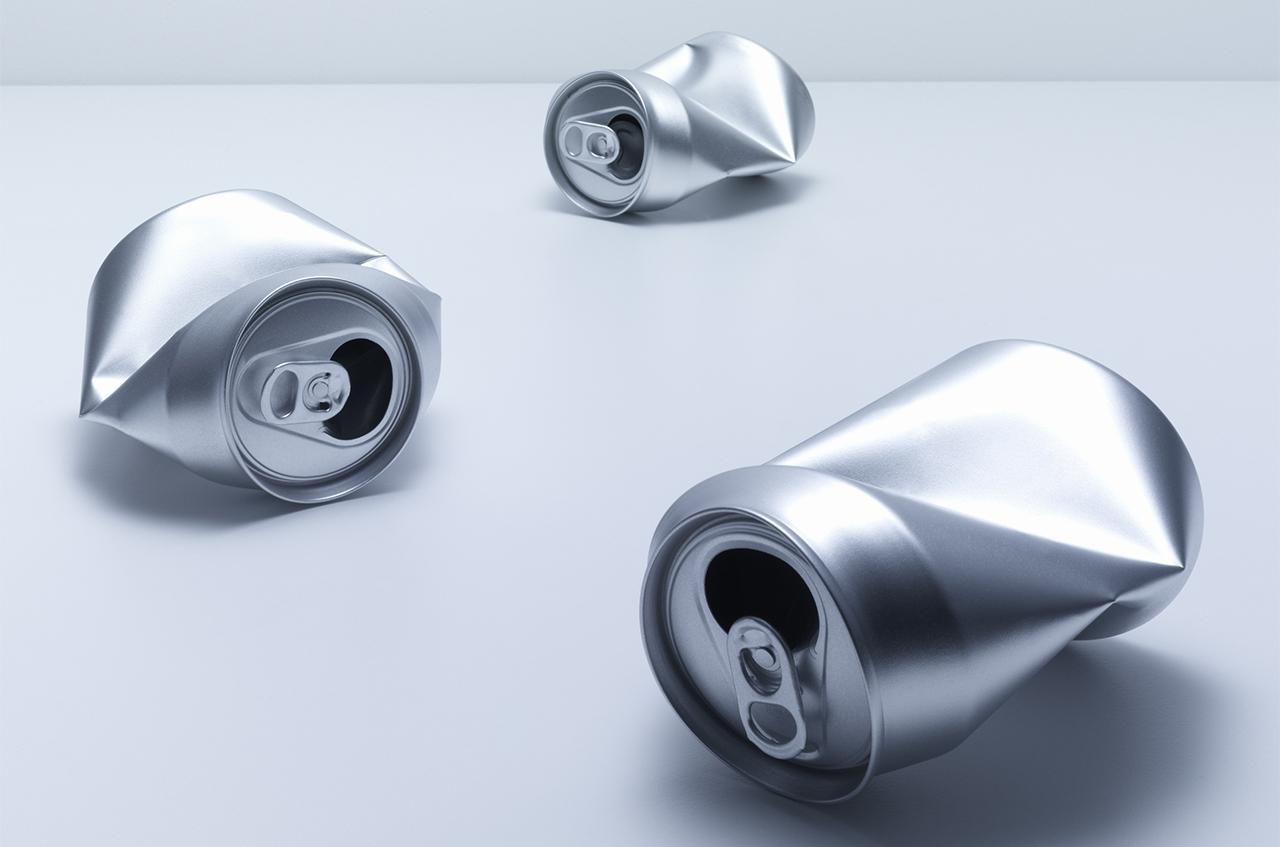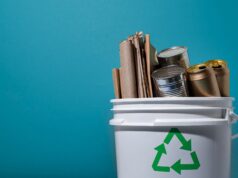Aluminum recycling plays a crucial role in environmental conservation and economic sustainability. When aluminum items, such as used cans, old appliances, or broken parts, are recycled rather than discarded, they can be collected and transformed into new materials or products. This practice significantly reduces energy consumption and promotes resource conservation, leading to less waste in landfills and a healthier environment.
One of the attractive aspects of aluminum recycling is the potential for financial gain. Businesses that take the initiative to recycle their scrap metals, including aluminum, can benefit from cost savings on raw material purchases. The aluminum price per pound fluctuates in the market, and recycling allows businesses to tap into this resource and utilize it effectively, reducing their reliance on expensive primary aluminum production.
What is Aluminum Recycling and Why Does it Matter for the Environment and Economy

Aluminum recycling plays a vital role in both environmental conservation and economic sustainability. Aluminum is a widely used metal due to its lightweight, durability, and corrosion resistance. However, extracting aluminum from its raw form, bauxite ore, is an energy-intensive process that contributes to carbon emissions and resource depletion. This is where aluminum recycling becomes crucial. By recycling aluminum, we can significantly reduce the energy consumption and greenhouse gas emissions associated with primary aluminum production.
Aluminum recycling helps to preserve valuable natural resources. It is endlessly recyclable, meaning it can be recycled and reused without losing its inherent properties. This circular economy approach reduces the need for new aluminum production, conserving raw materials such as bauxite, water, and energy. Aluminum recycling also helps to minimize landfill waste, as discarded aluminum products can be transformed into new products through recycling processes.
From an economic perspective, aluminum recycling offers various advantages. It contributes to the creation of a sustainable supply chain by reducing reliance on virgin aluminum production. The recycling industry generates jobs in the collection, sorting, processing, and manufacturing sectors, contributing to local and national economies. Furthermore, recycling aluminum often proves to be more cost-effective than producing new aluminum, making it an attractive option for industries seeking affordable and sustainable material solutions.
How Aluminum Can Be Recycled and Reused
Aluminum recycling involves a series of well-established processes that enable the metal to be recovered and reused. The first step is the collection of aluminum scrap from various sources, including beverage cans, automotive parts, construction materials, and packaging. These scrap items are then sorted to separate aluminum from other materials. Magnetic sorting, eddy current separation, and optical sorting technologies are commonly used in this process.
Once the aluminum scrap is sorted, it undergoes a cleaning and shredding process to remove any contaminants and prepare it for melting. The shredded aluminum is then melted in large furnaces, where it is transformed into molten metal. During the melting process, impurities are removed, and the alloy composition can be adjusted to meet specific requirements.
Benefits of Aluminum Recycling for the Environment

Aluminum recycling offers significant environmental benefits. First and foremost, recycling aluminum requires only a fraction of the energy needed for primary aluminum production. It has been estimated that recycling aluminum saves up to 95% of the energy compared to producing aluminum from raw materials. These energy savings translate into a substantial reduction in greenhouse gas emissions, contributing to mitigating climate change.
By diverting aluminum waste from landfills, recycling also helps alleviate the strain on waste management systems. Landfills take up valuable land, emit greenhouse gases as waste decomposes, and pose risks to the environment and public health. By recycling aluminum, we can reduce the amount of waste sent to landfills and promote a more sustainable waste management approach.
Economic Benefits of Aluminum Recycling
Aluminum recycling presents several economic advantages for both businesses and communities. Recycling aluminum contributes to the development of a thriving recycling industry. The collection, sorting, and processing of aluminum scrap create employment opportunities at various stages of the recycling process. From the individuals involved in collection and sorting to the technicians operating recycling facilities, the industry provides jobs and contributes to local economies.
The economic benefits of aluminum recycling extend beyond cost savings. By reducing the demand for primary aluminum, recycling helps to stabilize the price of aluminum in the market. When there is a steady supply of recycled aluminum, it reduces the vulnerability of businesses and industries to fluctuations in raw material prices. This stability fosters economic growth and enhances the overall resilience of the industry.
Tips on How to Reduce Waste Through Aluminum Recycling

Reducing waste through aluminum recycling is an effective way to promote sustainability and minimize the environmental impact of this versatile metal. Here are some practical tips to help you maximize your aluminum recycling efforts:
- Implement a recycling program: Set up designated recycling bins for aluminum cans and other aluminum products in your home, office, or community spaces. Make sure these bins are easily accessible and clearly labeled to encourage proper recycling.
- Educate and raise awareness: Promote the importance of aluminum recycling by educating others about its environmental benefits. Share information about recycling processes, energy savings, and the infinite recyclability of aluminum to inspire others to participate.
- Opt for aluminum packaging: When making purchasing decisions, choose products that come in aluminum packaging, such as canned beverages and food containers. It is highly recyclable and can be easily turned into new products.
- Avoid contamination: Ensure that recyclables are clean and free from other materials. Rinse out food and beverage containers before placing them in the recycling bin to prevent contamination that could affect the recycling process.
- Support recycling initiatives: Get involved in local recycling programs and initiatives. Participate in community recycling events or support organizations that promote aluminum recycling. By actively engaging in such initiatives, you contribute to a more sustainable future.
- Encourage others to recycle: Share your knowledge and enthusiasm for doing it with friends, family, and colleagues. Encourage them to join you in recycling aluminum and emphasize the positive impact it has on the environment and the economy.
By following these tips, you can play an active role in reducing waste through material reuse and contribute to a more sustainable future.
Challenges Facing the Aluminum Recycling Industry Today

While aluminum recycling offers numerous benefits, there are several challenges that the industry faces in its efforts to promote sustainable practices. These challenges include:
- Contamination and sorting complexities: Contamination from other materials, such as plastics and paper, poses a significant challenge in aluminum recycling. Proper sorting and separation techniques are required to ensure the purity of the recycled material. Developing advanced sorting technologies and improving consumer awareness about proper recycling practices are essential to address
- Collection and infrastructure limitations: The efficient collection of aluminum scrap can be challenging, especially in regions with inadequate recycling infrastructure. Limited access to collection points and lack of convenient recycling options can discourage individuals and businesses from participating in it. Investing in comprehensive recycling infrastructure, expanding collection networks, and implementing convenient recycling programs can help overcome these limitations.
- Economic viability: The economic viability of aluminum recycling is influenced by market conditions, including fluctuating prices of raw materials and energy costs. When the prices of primary aluminum are low, it may struggle to compete in the market. To address this challenge, it is crucial to establish policies and incentives that support the demand for recycled aluminum and create a favorable economic environment for the recycling industry.
- Consumer behavior and awareness: Promoting a recycling culture requires continuous efforts to raise consumer awareness and educate the public about the importance. Many individuals are still unaware of the benefits of recycling or lack knowledge about proper recycling practices. Implementing educational campaigns, providing clear recycling guidelines, and engaging communities through outreach programs can help address this challenge.
- Technological advancements: This industry can benefit from continuous technological advancements. Innovations in sorting, processing, and refining techniques can improve the efficiency and effectiveness of aluminum recycling. Research and development efforts should focus on developing new technologies that enable the recycling of complex these products and alloys, ensuring a higher recycling rate and minimizing waste.
Conclusion
In conclusion, aluminum recycling is a profitable endeavor that carries many benefits for the environment and economy. Not only does it reduce production costs, but also has a positive impact on the environment by preserving natural resources and reducing emissions from energy production. The cost savings and environmental benefits could be potentially greater if more people choose to recycle aluminum instead of throwing it away. It’s also worth noting that scrap metal removal services exist for those who need help managing or disposing of larger quantities of aluminum or other types of scrap metal. With the right strategies in place, it could become an even bigger part of our global sustainability efforts going forward.









